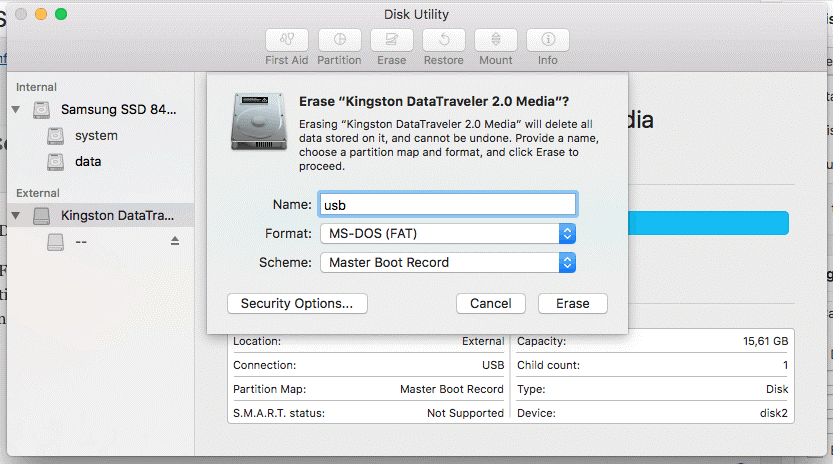
- #Format fat32 on mac terminal how to
- #Format fat32 on mac terminal mac os
- #Format fat32 on mac terminal software
- #Format fat32 on mac terminal mac
#Format fat32 on mac terminal mac
Some USB drives can’t be used directly with a Mac system until you format them to be compatible with the macOS extended file system. Moreover, the journaling feature helps in keeping track of all files created, deleted by you.Updated to macOS Data Recovery Tips by Lopez on Mar 22, 2022

You should try to write on NTFS files from your Mac because it is more secure in comparison to another file system.

In addition to all the above software, you can also look for OSXFUSE, Mounty For NTFS, NTFS 3G, NTFS Mounter and M3 BitLocker. Moreover, it comes with advanced features to check and repair files too. With ease, you can open, delete, move, or copy files from the Windows NTFS formatted USB drive. : With Tuxera, you can do everything with your NTFS drive on Mac that you do in Windows.Moreover, it supports not only the latest macOS version but also all other older mac versions. You can transfer data safely without any hassle.
#Format fat32 on mac terminal software
Paragon Software: It is six times faster than any other NTFS software in the market and comes with powerful features.Moreover, it does all of this without reformatting the drive.
#Format fat32 on mac terminal mac os
#Format fat32 on mac terminal how to
Furthermore, press Ctrl X4 to exit.Īlso Read: How To Set Up A VPN On Mac In 2021? 2. Remove the second command you entered before and save by clicking on Ctrl O. You can do this by going to the Terminal again, typing the same command we discussed above, and entering the administrator password. In addition, if your external drive is not responding or malfunctioning after pressing this command, remove the command from the fstab file. Moreover, this is your sure shot solution to making the NTFS files writable on macOS Big Sur. Step 4: Now, replace the word NAME with the name of the NTFS drive you want to write. In this, you have to copy the second command, which is LABEL = NAME none NTFS rw.auto.nobrowse. Step 3: Furthermore, it will open a new window.

Step 2: The command prompt will ask for your administrator password. Step 1: Open the Terminal and copy the command Sudo nano/etc/fstab and paste it. However, if you follow these steps, you can use the New Technology File System to read, write and manage your files. How To Write On A NTFS Formatted Drive On MacOS Using Terminal?Įven though Apple has brought in a number of changes and upgrades to its operating system, it has not done much to use an NTFS drive. Thus, in today’s blog post, we will discuss how to go about tackling this issue so that you can use an NTFS formatted drive on your macOS Big Sur.Īlso Read: How To Use SharePlay In FaceTime On iPhone 1. Mac users, however, can only read an NTFS formatted drive but cannot do anything beyond that. NTFS or New Technology File System is a widely used format to read and write files on Windows.


 0 kommentar(er)
0 kommentar(er)
